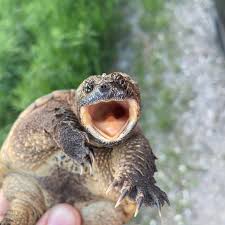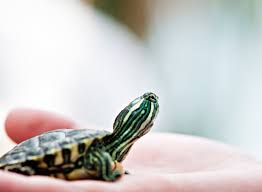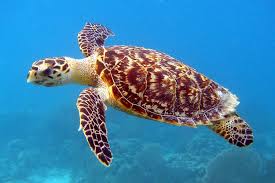The Green Turtle (Chelonia mydas) is a fascinating species of marine turtle that captivates with its grace and beauty. Known for their large size and strikingly vibrant green shell, these magnificent creatures play a vital role in maintaining the balance of marine ecosystems. Despite their grandeur and significance, they face numerous threats, making them a vital focus for conservation efforts globally.
Species Characteristics
- Physical Traits: Every species has unique physical attributes, such as size, shape, color, and pattern, which help them adapt to their specific environments.
- Behavioral Traits: The behavior of a species, including its feeding habits, reproductive strategies, and social structure, significantly impacts its survival and distribution.
- Habitat: The type of environment where a species naturally lives and grows is crucial to its survival. This can range from dense forests, arid deserts, to aquatic environments.
- Reproduction: Reproduction methods vary greatly among species, including sexual reproduction, asexual reproduction, and even complex life cycles involving different stages.
- Adaptability: A crucial characteristic of any species is its ability to adapt to changes in its environment. This could relate to changes in food sources, climate, or the introduction of new species.
Global Distribution and Nesting
- Global Distribution: The distribution of species on a global scale is influenced by a variety of factors including climate, terrain, and availability of resources. For example, some species are found only in certain climate zones due to their specific survival needs, while others are more adaptable and can be found in a wide range of environments.
- Nesting: Many creatures, from birds to insects, engage in nesting behavior as part of their reproductive cycle. This process is crucial for the survival of the next generation. Factors such as the availability of suitable nesting materials, the presence of predators, and the climatic conditions play a significant role in determining the nesting habits of species.
Life History and Behavior
- Life History: Life history refers to the sequence of events related to survival and reproduction that occur from birth through death. Different organisms present varied life histories, including their age and size at maturity, number and size of offspring, and lifespan.
- Behavior: Behavior in biology can be defined as all of the actions an organism undertakes, from foraging for food to complex social behaviors. This can include instinctual behaviors, like a bird building a nest, or learned behaviors, such as a person learning to ride a bike.
- Interaction of Life History and Behavior: The life history of an organism interacts with its behavior in intricate ways. For example, the behavior of an organism can influence its survival and reproduction, key elements of its life history. Conversely, life history can influence the behaviors an organism exhibits. For instance, organisms that mature rapidly may invest less in behaviors associated with survival compared to those that mature more slowly.
Related Post : Loggerhead Turtle Overview
Conservation Efforts
- Preservation of Natural Habitats: Conservation efforts often involve protecting and preserving natural habitats that are home to diverse species. This not only maintains biodiversity but also ensures the survival of species that may be threatened by human activities or climate change.
- Sustainable Use of Resources: Conservation initiatives promote the sustainable use of natural resources to prevent depletion and maintain ecological balance. This includes advocating for responsible fishing, logging, and mining practices.
- Education and Awareness: Educating the public about the importance of conservation is a critical aspect of these efforts. By raising awareness about environmental issues and promoting sustainable practices, conservation initiatives can garner wider support and influence behavioral change.
- Legislation and Policies: Conservation efforts can involve lobbying for stronger environmental laws and policies. These legal measures can protect endangered species, restrict harmful practices, and provide funding for conservation programs.
- Climate Change Mitigation: Conservation initiatives often include measures to mitigate climate change, such as protecting forests that absorb carbon dioxide, promoting renewable energy, and encouraging low-carbon lifestyles.
Population Status
- The current global population stands at approximately 7.9 billion people and is expected to reach 9.7 billion by 2050, according to United Nations estimates.
- Geographically, Asia remains the most populous continent, housing over 4.5 billion people or about 60% of the world’s population.
- The population growth rate, while showing signs of slowing, is still a major concern, especially in developing nations where resources are already strained.
- Aging population is becoming a significant issue in developed countries like Japan and Germany, where the median age is rising, implying a growing number of elderly people compared to the younger generation.
- Population density varies significantly across the world, with densely populated urban areas experiencing a range of issues from housing shortages to increased pollution.
- On the other end, depopulation in certain rural and remote areas is leading to challenges related to maintaining necessary services and infrastructure.
- Population dynamics including birth rates, death rates, immigration, and emigration trends significantly impact the socio-economic fabric of nations, influencing areas like healthcare, education, labor markets and public policy.
Appearance and Anatomy
- Physical Characteristics: The appearance of an organism largely depends on their physical characteristics such as size, color, shape, and texture.
- Structural Anatomy: This involves the structural organization of the organism, including skeletal and muscular systems, which contribute to its overall appearance.
- Features: Distinctive features such as fur in mammals, feathers in birds, or scales in reptiles have a significant impact on the organism’s appearance.
- Modification: Some organisms may undergo physical modification, like the changing color of a chameleon, which alters their appearance based on the environment or situation.
- Age and Gender Differences: The appearance of organisms can also vary with age and between genders, as witnessed in the mane of male lions or the antlers of male deer.
Threats to Survival
- Climate Change: As global temperatures rise, habitats can change faster than animals have time to adapt, leading to a decline in certain species.
- Habitat Destruction: Urbanization, deforestation, and other forms of land development result in loss of natural habitats.
- Pollution: Chemicals, plastics, and other pollutants can harm a wide range of species on land and in the sea.
- Overhunting and Overfishing: Overexploitation of species for commercial purposes can rapidly deplete populations.
- Invasive Species: Non-native species can disrupt ecosystems, outcompeting native species for resources.
- Disease: Some diseases can rapidly wipe out entire populations, especially if the species lack genetic diversity.
Conclusion
- Language codes, such as “EN-US”, provide a standardized way of classifying languages and dialects, ensuring content is accessible to the right audience.
- These codes are vital in the digital era, where content is shared globally and needs to be accurately localized for different regions.
- Adhering to language codes, therefore, enhances the overall user experience, ensuring content meets readers’ linguistic preferences and cultural expectations.
- Consequently, all documents should specify their language code to ensure the content is contextual and relevant to the intended readership.


